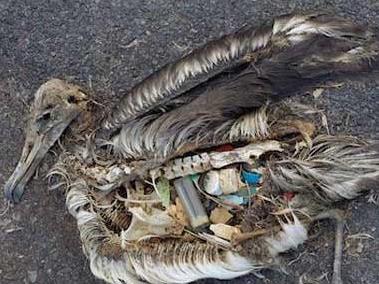Chris Jordan: Intolerable Beauty: Facing the Mirror of Mass Consumption Image via Climarte
Throughout history, the arts have played a major role in recording and reflecting on the state of human society, and on the natural world of which society is but a part. In Australia, there are Aboriginal rock paintings of animal motifs that are 40,000 years old. These works clearly indicate the importance of the natural world to the people who created them.
Today, contemporary artists are creating works that allow us to see and feel the reality of the Anthropocene: the ‘human age’ in which human beings have become a major geological force.
Although the scientific community has been communicating to the public the facts of climate change for over twenty five years, we have done little in the way of combatting human-caused climate change. It is clear that we need to engage with the issue in a different way.
Art offers a different point of entry, providing a space for us to engage on an emotional and instinctual, as well as rational, level.
Art has the unique capacity to stimulate individuals both intellectually and emotionally, and to engender the personal and collective action that is needed in the face of overwhelming statistics, news reports and political discourse.
Experiencing art lends us a different kind of knowledge that can be complementary to the empirical facts of science. This knowledge is grounded in our personal and unique responses to art, and allows us to gain an understanding that cannot be achieved solely by reading scientific reports and policy responses.
Artists in ART+CLIMATE=CHANGE2015 have created works across a range mediums and practices, offering a myriad of avenues for audiences to engage, reflect, and be inspired to take action.
Chris Jordan exposes the impact of our mass consumerism on the natural world in his photographic series Intolerable Beauty: Facing the Mirror of Mass Consumption. In Ice Texts, David Buckland quotes US President Barack Obama and asks the viewer, ‘Will you look your grandchildren in the eyes and tell them that you didn’t know?’ Amy Balkin’s socially engaged project, Public Smog, aims to have the Earth’s atmosphere listed on the UNESCO World Heritage List.
Alongside these works are softer, more reflective works that capture the beauty of nature: bark paintings by John Mawurndjul and Gulumbu Yunupingu engage with the natural world in a ceremonial and celebratory way, while Ansel Adams’ iconic photographs of the American West are one of the earliest examples of the capacity of art to influence environmental policy. “We need a little earth to stand on and feel run through our fingers,” the artist said. “Perhaps photography can do this – I am going to try anyhow.”
Historically, the arts have been a catalyst for political, social and environmental change. Adams’ compelling photographs of King’s Canyon were instrumental in the 1930s campaign to have the site preserved as a national park. In Australia in the 1980s, Peter Dombrovskis’ photographs of the Franklin River were central to the Tasmanian Wilderness Society’s campaign against the Franklin River Dam project.
These historic artists set a precedent, showing the power of art for positive change. It can reflect, interpret, and inspire action, and has the capacity to reach a broad audience across a cross section of social and economic strata. Arts spaces – galleries, museums and other public spaces – provide places for audiences to be receptive to new ideas in new ways. Art can re-energise and re-orient our relationship to the natural world, to reality, and to immediacy.
Undoubtedly, a rational and scientific engagement is vital to forming and enacting solutions to the climate problem we all face. But a cultural shift is also needed, and artists have the capacity to begin and reinforce this movement. Their work can help to fuel a cultural narrative that inspires a vibrant, positive vision of the future.
Growing up, I was lucky to be surrounded by beauty and mystery in artworks and in nature. I want the same for my children and for theirs in turn.
Barack Obama said, “We are the first generation to feel the impact of climate change, and the last generation that can do anything about it.” CLIMARTE was formed with the goal of motivating people to do something about climate change, by harnessing the creative power of the arts to inform, engage and inspire people to tackle these challenging issues.
The arts may not have all the answers – but it is well and truly time for the arts to be part of the conversation that moves us towards a safe climate and a just and sustainable future, for all.





